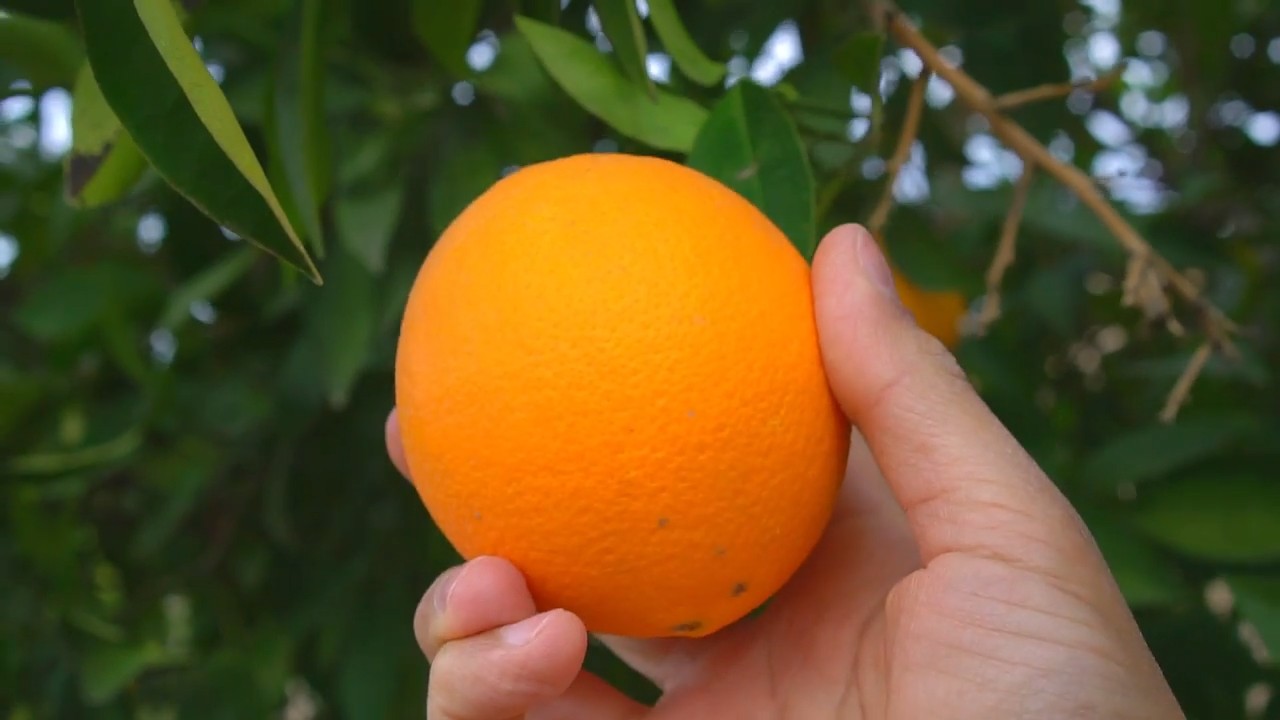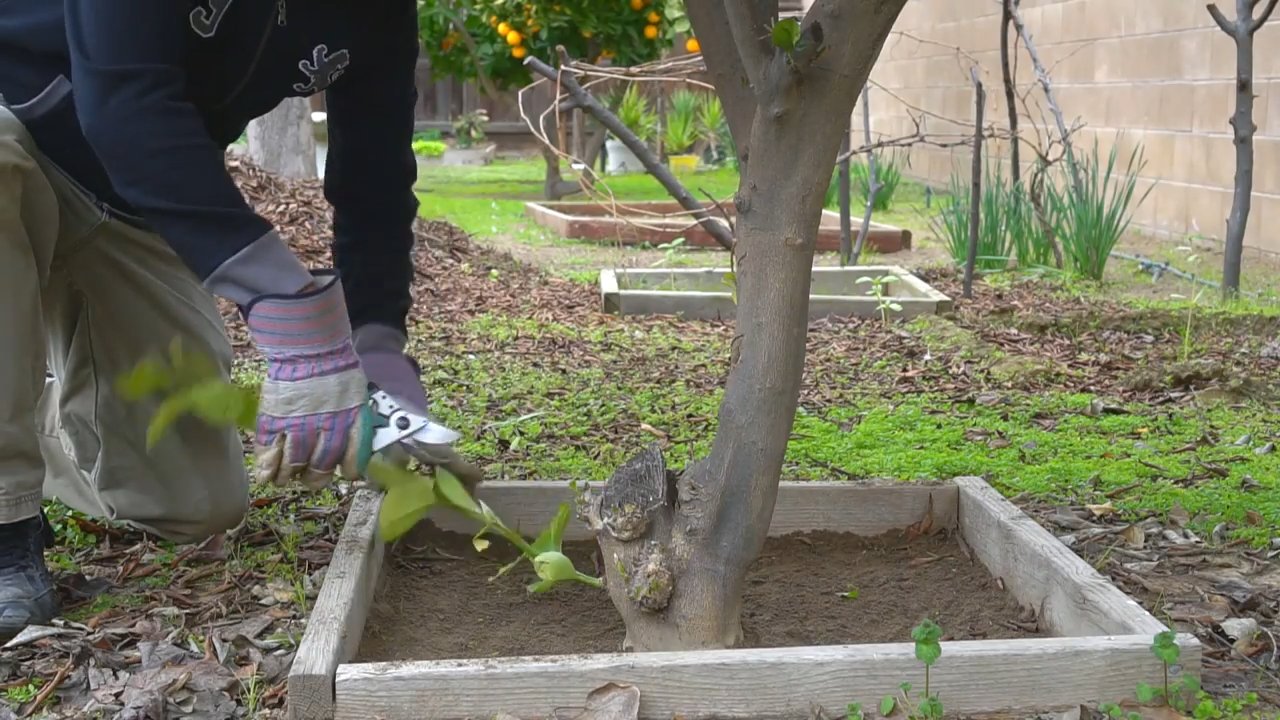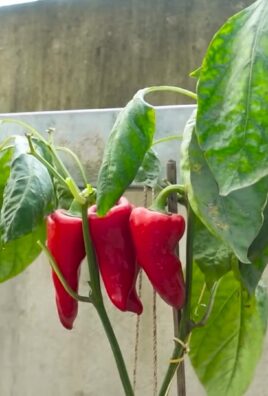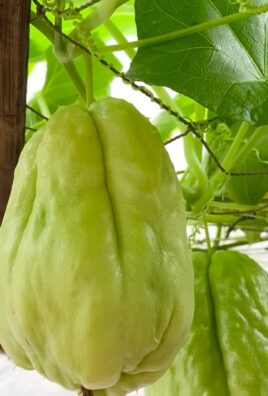Growing oranges indoors might sound like a tropical dream reserved for sun-drenched climates, but I’m here to tell you it’s absolutely achievable, even if you’re miles away from an orange grove! Forget those expensive, store-bought oranges – imagine plucking a juicy, sun-kissed fruit straight from a tree you nurtured yourself, right in your living room.
Citrus cultivation has a rich history, dating back thousands of years in Asia, and has been cherished for both its culinary and medicinal properties. Bringing that history into your home is easier than you think! But why bother with the effort? Well, beyond the sheer satisfaction of growing your own food, growing oranges indoors offers a unique connection to nature, especially during those long winter months when the outside world seems dormant. Plus, it’s a fantastic way to add a touch of vibrant greenery and a delightful citrusy aroma to your home.
This DIY guide is packed with simple, effective tricks and hacks that will empower you to successfully cultivate your own miniature orange oasis. Whether you’re a seasoned gardener or a complete beginner, I’ll walk you through everything you need to know, from choosing the right variety to providing the perfect light and nutrients. Get ready to transform your space and enjoy the sweet taste of homegrown oranges all year round!

Grow Your Own Oranges: Your DIY Guide for Indoor Cultivation
Hey plant friends! Have you ever dreamed of harvesting your own juicy oranges, right in your living room in the middle of winter? Sounds crazy, right? But it’s absolutely doable! I’ll show you how, with a little patience and the right tricks, you can grow your own orange trees indoors. It’s a super exciting project that not only provides delicious fruit but also brings a touch of Mediterranean flair into your home. Let’s get started!
What you need for your indoor orange project
Before we begin, here’s a list of everything you’ll need. Don’t worry, you probably have most of these things at home already or can easily get them:
- Orange seeds: Preferably from organic oranges, as these are generally not treated.
- Small pots or seed starting trays: For germinating the seeds.
- Seed starting mix: This is low in nutrients and loose, ideal for young seedlings.
- A larger pot: For later transplanting the orange tree.
- Citrus potting soil: This is specially formulated for the needs of citrus plants.
- Spray bottle: For moistening the soil.
- Plastic bag or plastic wrap: To create a humid climate for germination.
- A bright window: Orange trees need a lot of light!
- Optional: Grow light, if your window doesn’t provide enough light.
- Optional: Fertilizer for citrus plants.
- Patience: The most important thing of all!
Phase 1: Preparation – Getting and Preparing the Seeds
- Get the seeds: Eat a delicious orange (or several!) and collect the seeds. Choose the plumpest and healthiest-looking seeds. The better the quality of the seeds, the higher the chance they will germinate.
- Clean the seeds: Rinse the seeds thoroughly under running water to remove any fruit pulp. This could otherwise cause mold and hinder germination.
- Prepare the seeds (optional, but recommended): To speed up germination, you can gently scuff the seeds. The best way to do this is to rub them lightly between two sheets of fine-grit sandpaper. Be careful not to damage the seeds!
- Soak the seeds: Place the prepared seeds in a glass of lukewarm water for 24 hours. This helps to soften the hard outer shell and stimulate germination.
Phase 2: Germination – Seeds Become Little Seedlings
- Prepare the pots: Fill the small pots or seed trays with seed starting mix. Lightly moisten the soil with the spray bottle. It should be damp, but not wet.
- Sow the seeds: Plant the prepared orange seeds about 1-2 cm (0.5-1 inch) deep in the soil. Place 2-3 seeds per pot or tray to increase the chances of successful germination.
- Retain moisture: Lightly spray the soil with water again and cover the pots or trays with a plastic bag or plastic wrap. This creates a humid climate that promotes germination. Poke a few small holes in the wrap to allow air to circulate.
- Keep it warm and bright: Place the pots or trays in a warm and bright location, but not in direct sun. A temperature of 20-25°C (68-77°F) is ideal.
- Be patient: Now it’s time to wait! Germination can take a few weeks, sometimes up to a month. Keep the soil moist by spraying it regularly with the spray bottle. Air out the pots or trays briefly every day to prevent mold.
Phase 3: The Upbringing – From Seedling to Little Tree
- Pricking out: As soon as the first small seedlings (with 2-4 leaves) sprout from the soil, it’s time to prick them out. This means you carefully transplant the strongest seedlings into separate pots.
- Lift out carefully: Gently loosen the seedlings from the soil with a small spoon or a dibber. Be careful not to damage the roots.
- Transplant: Fill the larger pots with citrus potting soil. Make a small hole in the soil and place the seedling inside. Fill the hole with soil and press it down lightly.
- Water: Gently water the seedlings after transplanting.
- Location: Place the young orange trees in a bright and sunny spot. A south-facing window is ideal. Make sure the seedlings get at least 6 hours of sunlight per day.
- Watering: Water the orange trees regularly, but not too much. The soil should always be slightly moist, but not wet. Avoid waterlogging, as this can lead to root rot. It’s best to test with your finger if the soil is dry before watering.
- Fertilizing: Fertilize the orange trees every 2-4 weeks during the growing season (spring to autumn) with a special fertilizer for citrus plants. Follow the dosage instructions on the packaging.
- Humidity: Orange trees love high humidity. You can increase the humidity by regularly spraying the leaves with water or by placing a tray of water near the plant.
- Pruning: To encourage bushy growth, you can prune the orange trees regularly. Remove dead or diseased branches and trim back long shoots. The best time to prune is in the spring.
- Overwintering: In winter, orange trees need a rest period. Place them in a cool and bright spot (approx. 10-15°C / 50-59°F) and water them less. Do not fertilize the plants in winter.
Common Problems and Solutions
- Yellow leaves: Yellow leaves can have various causes, e.g., too much or too little water, nutrient deficiency, or pests. Check the soil and adjust your watering. Fertilize the plant if necessary.
- Leaf drop: Leaf drop can be caused by air that is too dry, too little light, or temperature fluctuations. Increase the humidity, move the plant to a brighter location, and avoid drafts.
- Pests: Orange trees can be infested by pests such as aphids, spider mites, or scale insects. Check the plants regularly and treat pests with a suitable product if necessary.
When will the first oranges appear?
That is the question of all questions! Unfortunately, it takes several years for an orange tree grown from seed to bear fruit for the first time. So, you’ll need a lot of patience. It often takes 5-7 years, sometimes even longer. But the effort is worth it! And even if your tree doesn’t bear fruit, it’s a beautiful houseplant that will bring you a lot of joy.
Important: Orange trees grown from seed are generally not “true to type.” This means that the fruit can taste different from the orange from which you got the seeds.
I hope this guide helps you grow your own orange trees indoors. It’s an exciting and rewarding project that will bring you a lot of joy.

Conclusion
So, there you have it! Growing oranges indoors might seem like a tropical dream reserved for sun-drenched groves, but with a little know-how and dedication, you can absolutely cultivate your own miniature citrus paradise right in your home. This DIY trick isn’t just about having a pretty plant; it’s about experiencing the joy of nurturing something from seed (or sapling) to fruit, enjoying the fragrant blossoms that fill your home, and ultimately, savoring the sweet, tangy reward of your own homegrown oranges.
Why is this a must-try? Beyond the sheer satisfaction of successfully growing your own food, indoor orange trees offer a unique connection to nature, especially during colder months when outdoor gardening is limited. They purify the air, adding a touch of vibrant green to your living space, and provide a constant reminder of the warmth and sunshine to come. Plus, imagine the bragging rights when you offer friends and family a slice of an orange you grew yourself!
Don’t be afraid to experiment! While we’ve outlined the basics, there’s plenty of room for personalization. Try different varieties of dwarf orange trees, such as Calamondin or Kumquat, which are particularly well-suited for indoor growing. Play around with different potting mixes to find what works best for your specific environment. Consider adding companion plants to your pot, like herbs or flowers, to create a miniature ecosystem. You can even explore different training techniques, such as espalier, to shape your tree into a unique living sculpture.
Remember, patience is key. Growing oranges indoors takes time and effort, but the rewards are well worth it. Don’t get discouraged if you encounter challenges along the way. Every plant is different, and learning to understand its needs is part of the fun.
We wholeheartedly encourage you to give this DIY trick a try. Start small, be observant, and don’t be afraid to ask for help. The journey of growing your own oranges indoors is a rewarding one, filled with learning, discovery, and ultimately, delicious fruit.
And most importantly, we want to hear about your experience! Share your photos, tips, and challenges in the comments below. Let’s create a community of indoor orange growers and learn from each other’s successes and failures. Together, we can bring a little bit of sunshine into our homes, one orange tree at a time. Let us know what you think about this guide to growing oranges indoors.
Frequently Asked Questions (FAQ)
What type of orange tree is best for growing indoors?
Dwarf varieties are generally the best choice for indoor growing due to their smaller size and adaptability to container life. Some popular options include:
* **Calamondin Orange:** This is a very popular choice, known for its prolific fruiting and tolerance of indoor conditions. The fruit is tart but can be used in marmalades and other recipes.
* **Kumquat:** While technically not an orange, kumquats are citrus fruits that thrive indoors and produce small, edible fruits with a sweet rind and tart pulp.
* **Meyer Lemon:** Although a lemon, it’s often mistaken for an orange due to its sweeter flavor and is a great option for indoor citrus growing.
* **Dwarf Valencia Orange:** A true orange, but in a smaller, more manageable size. It may require more light than other varieties.
How much sunlight do indoor orange trees need?
Orange trees need a significant amount of sunlight to thrive and produce fruit. Aim for at least 6-8 hours of direct sunlight per day. A south-facing window is ideal. If you don’t have enough natural light, supplement with a grow light. LED grow lights are energy-efficient and provide the full spectrum of light that plants need. Rotate your tree regularly to ensure all sides receive adequate light.
What kind of soil should I use for my indoor orange tree?
Use a well-draining potting mix specifically formulated for citrus trees. These mixes typically contain a blend of peat moss, perlite, and vermiculite to provide good drainage and aeration. Avoid using garden soil, as it can become compacted and waterlogged in containers.
How often should I water my indoor orange tree?
Water your orange tree when the top inch of soil feels dry to the touch. Water thoroughly until water drains out of the drainage holes in the bottom of the pot. Avoid overwatering, as this can lead to root rot. During the winter months, when the tree is not actively growing, you may need to water less frequently.
What kind of fertilizer should I use for my indoor orange tree?
Use a citrus-specific fertilizer that contains micronutrients like iron, zinc, and manganese. Fertilize your tree every 4-6 weeks during the growing season (spring and summer). Follow the instructions on the fertilizer label carefully. Reduce or stop fertilizing during the winter months.
How do I pollinate my indoor orange tree?
Indoor orange trees may need help with pollination, as there are no bees or other insects to do the job. You can hand-pollinate your tree by using a small paintbrush to transfer pollen from one flower to another. Gently brush the pollen from the stamen (the male part of the flower) onto the pistil (the female part of the flower).
Why are the leaves on my orange tree turning yellow?
Yellowing leaves can be a sign of several problems, including:
* **Overwatering or underwatering:** Check the soil moisture and adjust your watering accordingly.
* **Nutrient deficiency:** Fertilize your tree with a citrus-specific fertilizer.
* **Pest infestation:** Inspect your tree for pests like spider mites, aphids, or scale. Treat with an appropriate insecticide or horticultural oil.
* **Lack of sunlight:** Ensure your tree is receiving enough sunlight.
How do I deal with pests on my indoor orange tree?
Inspect your tree regularly for pests. If you find any, treat them promptly with an appropriate insecticide or horticultural oil. You can also try wiping the leaves with a damp cloth to remove pests. Neem oil is a natural and effective option for controlling many common pests.
How often should I repot my indoor orange tree?
Repot your orange tree every 2-3 years, or when it becomes root-bound. Choose a pot that is slightly larger than the previous one. Use a fresh citrus-specific potting mix. Repotting is best done in the spring.
Can I grow an orange tree from seed indoors?
Yes, you can grow an orange tree from seed, but it will take longer to produce fruit than a grafted tree. Also, the fruit may not be true to the parent plant. To grow an orange tree from seed, extract the seeds from a ripe orange, rinse them, and plant them in a well-draining potting mix. Keep the soil moist and warm. Germination can take several weeks.
My orange tree is flowering, but not producing fruit. Why?
There are several reasons why your orange tree might be flowering but not producing fruit:
* **Lack of pollination:** As mentioned earlier, you may need to hand-pollinate your tree.
* **Insufficient sunlight:** Orange trees need plenty of sunlight to produce fruit.
* **Nutrient deficiency:** Ensure your tree is receiving adequate nutrients.
* **Young age:** It may take several years for a young orange tree to mature enough to produce fruit.
* **Temperature fluctuations:** Sudden changes in temperature can cause flowers to drop.
How do I prune my indoor orange tree?
Prune your orange tree in the late winter or early spring to remove dead, damaged, or crossing branches. You can also prune to shape the tree and encourage bushier growth. Avoid pruning too heavily, as this can reduce fruit production.
What is the ideal temperature for growing oranges indoors?
Orange trees thrive in temperatures between 65°F and 80°F (18°C and 27°C). Avoid exposing your tree to temperatures below 55°F (13°C).
Can I move my indoor orange tree outdoors during the summer?
Yes, you can move your indoor orange tree outdoors during the summer, but be sure to acclimate it gradually to the increased sunlight and temperature. Start by placing it in a shady spot for a few hours each day, gradually increasing the amount of sunlight over a week or two. Bring it back indoors before the first frost.
How long does it take for an indoor orange tree to produce fruit?
It can take anywhere from 2 to 7 years for an indoor orange tree to produce fruit, depending on the variety and growing conditions. Grafted trees typically produce fruit sooner than trees grown from seed. Patience is key!




Leave a Comment